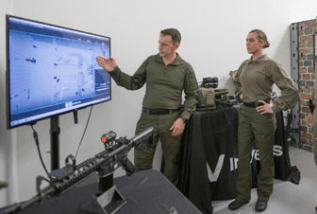Gamification In The Public Industry
Gamification involves people at a psychological level, which is much more effective than regular transactional involvement approaches.
— Brian Burke, Gamify: Just How Gamification Inspires Individuals to Do Extraordinary Points
Government training has never been a lot more essential or more complicated. From energetic shooter preparedness to cybersecurity readiness, public servants are significantly contacted us to navigate high-stakes situations where decisions can have life-or-death effects. Standard training approaches like static discussions, dense guidebooks, or infrequent workshops typically fail to involve or prepare individuals for the vibrant challenges they encounter.
Enter gamification: the application of game layout principles to non-game contexts. In government training, gamification is greater than a buzzword; it’s a proven approach that boosts engagement, improves knowledge retention, and builds real-world preparedness. Whether it’s using Increased Fact to replicate emergencies, producing major games for catastrophe action, or immersing cyber groups in risky strike circumstances, federal government agencies are accepting gamified discovering to change training into a hands-on, high-impact experience.
Allow’s explore exactly how 3 prominent examples– DHS’s AR-based active shooter training, FEMA’s major video games, and the ITU’s Cyber Varies– demonstrate the power and potential of gamification in the general public sector.
Examples Of Gamification In Federal government
DHS: Enhanced Truth For Energetic Shooter Educating
Through the National Urban Security Modern Technology Research Laboratory (NUSTL), the U.S. Department of Homeland Protection (DHS) has actually deployed Increased Truth (AR) systems to sustain energetic shooter feedback training. [1] These systems overlay electronic dangers and objects onto real-world settings, turning a regular classroom or workplace right into a vibrant training school. Students relocate with physical areas while responding to online simulation, all provided in real time through AR headsets or smart phones.

Picture from dhs.gov [1]
Why It Functions
AR gamifies the environment itself, supplying immersive feedback loops that imitate real-life stress factors. Individuals have to assess dangers, choose, and interact under stress– just like they would during a real emergency. This hands-on, scenario-based training enhances situational awareness and enhances retention much beyond conventional lecture-based styles.
The result? Very first -responders leave with muscular tissue memory and self-confidence that fixed drills hardly ever offer.
FEMA: Serious Games For Catastrophe Response
The Federal Emergency Situation Administration Company (FEMA) makes use of severe games– interactive, scenario-based simulations– to prepare public officials for natural calamities and complex emergencies. [2] One instance is FEMA’s Emergency Administration Institute’s Virtual Table top Workouts (VTTX), which allow participants to role-play calamity circumstances in a digital environment. Whether working with a hurricane evacuation or reacting to a chemical spill, gamers choose, allot sources, and adapt to altering problems.
Why It Works
Serious video games enhance systems believing, permitting individuals to see how their decisions effect others in actual time. They additionally promote cross-agency cooperation, considering that players must function as teams to attend to diverse obstacles. With integrated racking up, time restraints, and post-game comments, these simulations create a compelling understanding experience that shows the intricacy of real-life crisis administration.
FEMA’s use of gamification sustains not only preparedness yet likewise crucial representation, allowing leaders to evaluate their methods and boost them prior to a disaster ever strikes.
ITU: Cyber Ranges And International Threat Reaction
The International Telecommunication Union (ITU)– a UN agency– uses Cyber Ranges to educate national, regional, and worldwide cyber reaction groups on exactly how to challenge electronic risks like ransomware, DDoS assaults, and essential infrastructure hacks. [3] These gamified simulations area individuals in an online setting where they need to protect networks, recognize vulnerabilities, and consist of attacks under time stress.

Picture from itu.int [3]
Why It Works
Cybersecurity hazards advance swiftly, and traditional “checklist” training wants. Cyber Ranges develop high-fidelity simulations that simulate the complexity of modern-day cyber war. Gamification components– racking up systems, substitute opponents, real-time occurrence rises– drive involvement and construct the sensible skills required for contemporary electronic support.
What makes ITU’s method particularly effective is its joint international focus. Groups from different countries can engage in shared simulations, advertising common criteria, fast skill-building, and worldwide cybersecurity resilience.
Why Gamification Issues For Federal Government Training
These instances reveal a bigger reality: gamification isn’t almost enjoyable– it has to do with function. In high-stakes fields where lives, safety, and public trust are on the line, gamification deals:
- Interaction– Interactive circumstances enhance student motivation and lower cognitive exhaustion.
- Retention– Gamified training turns on numerous finding out techniques (aesthetic, acoustic, kinesthetic), enhancing memory and understanding.
- Responses– Real-time racking up and debriefs give actionable understandings for students and leaders.
- Flexibility– Simulations can be customized for varied audiences and changing threats.
- Collaboration– Team-based gameplay fosters cross-functional control and communication.
As innovation advances and public obstacles expand even more facility, gamification remains to play an important role in preparing government professionals– not simply to find out, however to lead in situation.
From Augmented Fact in law enforcement to catastrophe response video games and cyber war simulations, gamification is no more a future trend; it’s a current necessary. For firms looking for to develop durable, prepared, and dexterous teams, it’s time to elevate the method with game-based discovering.
References:
[1] Enhanced Reality (AR) Training Equipments for First Responders
[2] Severe video games in FEMA Regional Action
[3] CyberDrills

